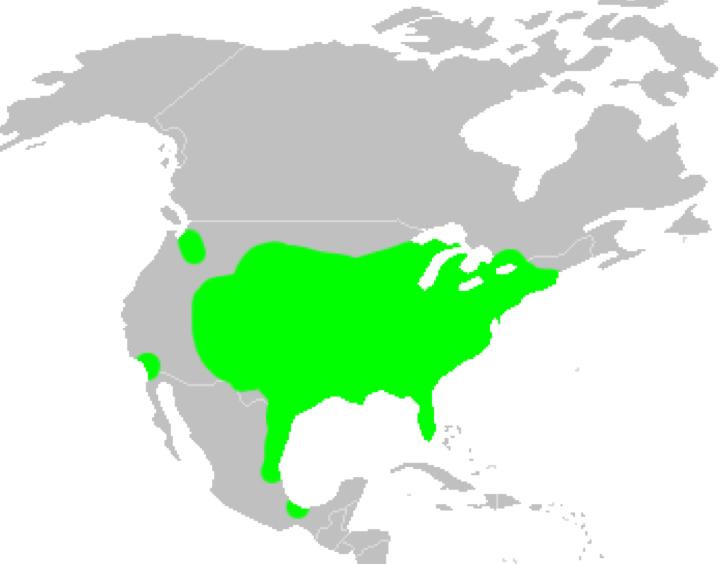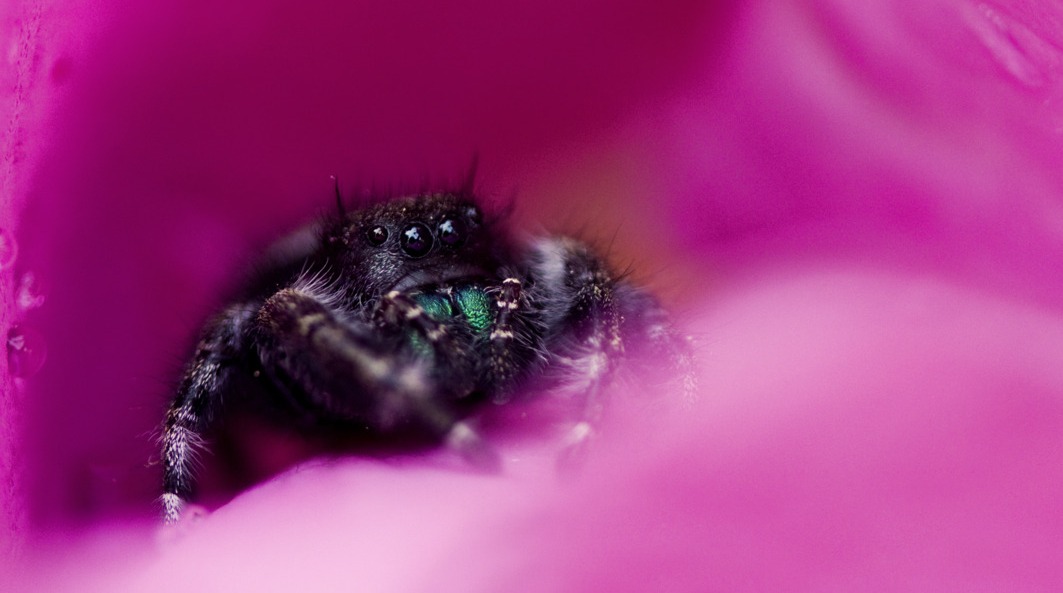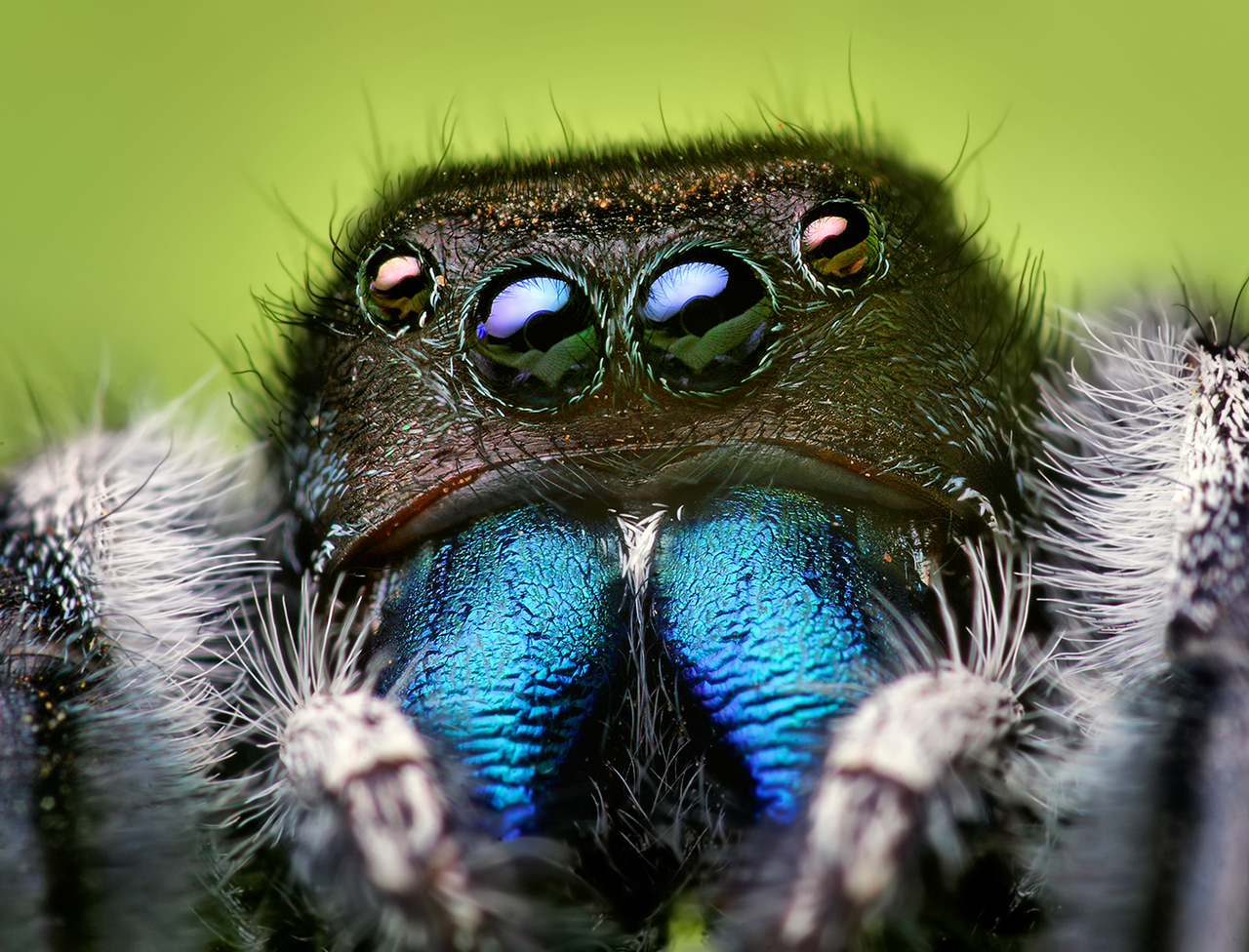Habitat
Among the family Salticidae, or jumping spider, family there
are easily 5000 different species found around the world.
Containing 13% of spider species, this makes Salticidae the most
diverse family of spiders. In the genus Phiddipus, there are
about 60 different confirmed species, including Phiddipus audax,
or the daring jumper (Jerzy 2012).
The daring jumping spider is mainly distributed in the United
States, but has been introduced in Hawaii and the Nicobar islands.
The majority of Phiddipus spiders are found in the Atlantic
coasts states and west to California. They are commonly found in
gardens, on tree trunks, or fallen leaves. Though less likely,
they are found inside homes near the windowsills, or doorjambs,
in search of prey. This organism seems to have adapted very well
to its environment as it has an abnormally quick and long
jumping ability of 10-50 times its body length. The spider does
this without having enlarged muscles in its legs. Instead, it
suddenly increases blood pressure in it’s third or fourth pair
of legs (Forster 1982).

Unlike
most other spiders, Phidippus audax does not spin webs to
catch prey. Though they will spin webs when laying eggs or
attempting to hide, they prefer open areas to hunt. Salticidae
spiders are very good at hiding and if they do not want you to
find them you won’t.
What do these guys eat?
